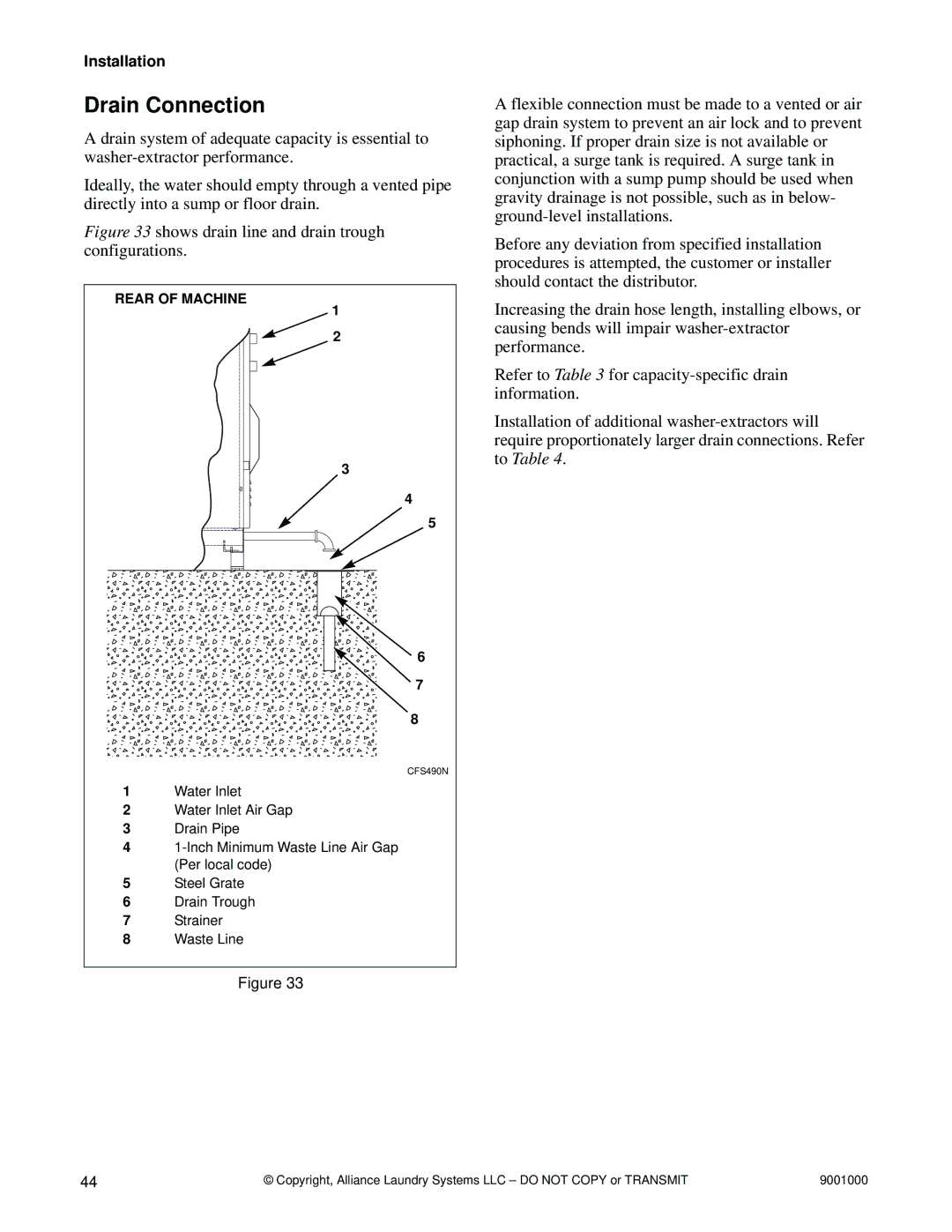
Installation
Drain Connection
A drain system of adequate capacity is essential to
Ideally, the water should empty through a vented pipe directly into a sump or floor drain.
Figure 33 shows drain line and drain trough configurations.
REAR OF MACHINE
1 2
3
4
5
6
7
8
CFS490N
1Water Inlet
2Water Inlet Air Gap
3Drain Pipe
4
5Steel Grate
6Drain Trough
7Strainer
8Waste Line
Figure 33
A flexible connection must be made to a vented or air gap drain system to prevent an air lock and to prevent siphoning. If proper drain size is not available or practical, a surge tank is required. A surge tank in conjunction with a sump pump should be used when gravity drainage is not possible, such as in below-
Before any deviation from specified installation procedures is attempted, the customer or installer should contact the distributor.
Increasing the drain hose length, installing elbows, or causing bends will impair
Refer to Table 3 for
Installation of additional
44 | © Copyright, Alliance Laundry Systems LLC – DO NOT COPY or TRANSMIT | 9001000 |
